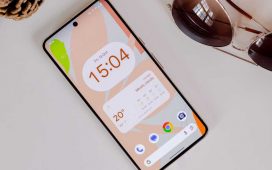While Oculus is going all-in on standalone VR, stopping sales of the PC-powered Rift 2 in favour of the lightweight Quest 2, HTC is going in the opposite direction, announcing the high-end PC-powered Vive Pro 2 at its Vivecon 2021 event.
While the Vive Pro 2 may look similar to its predecessor, the new headset has a particular focus on upgraded display technology – the heart of an immersive virtual reality experience – that could offer one of the most detailed, visually pleasing virtual experiences on the market right now.
Inside the Vive Pro 2 you’ll find a 5K (4896 x 2448) display with a smooth 120Hz refresh rate, besting not only Oculus’s Rift S headset (2560 x 1440) and Valve’s high-end Index headset (2880 x 1600) by quite a distance, but also the popular HP Reverb G2 (4320 x 2160), and that should translate to a much smoother, crisper virtual experience.
Vive claims that the high pixel density essentially removes the screen door effect present on lower resolution headsets – where you can see the gaps between the pixels, resulting in an effect that looks like you’re looking through a screen door – and it might even make it possible to read smaller text without getting uncomfortably close too.
It’s not just a high-res display though. Vive has also implemented an upgraded 120-degree field-of-view (FOV) – up from 110 degrees on the first-gen Vive Pro, and an improvement on the 114-degree FOV of the competing Reverb G2 – to help you get closer to the virtual worlds you’re engaging with, and that’s further enhanced with a new dual-lens system that helps keep things looking crisp right up to the edges of the display.

There’s also physical interpupillary distance (IPD) adjustment with complete control over the entire 55 – 72mm IPD range, allowing quick tweaks without the need to take the headset off. Take note, Oculus.
That’s coupled with built-in headphones with High-Res audio certification for great 3D sound, although these can be removed for those that prefer to use their own headphones. It’s also compatible with the ecosystem of SteamVR accessories, including the existing SteamVR base stations, controllers and wireless adapters as well as third-party alternatives like the Valve knuckle controllers and Manus gloves.
It’s a part of Vive’s ‘every setup is individual’ philosophy, allowing you to pick and choose to find the combination that works for you. That also applies to the buying process, allowing existing Vive Pro owners to buy the head-mounted display (HMD) alone at a discounted price – there’s no need to buy more controllers and base stations if you already have them handy, after all.
So, it’s clear to see that the Vive Pro 2 could offer some of the most pleasing virtual visuals possible right now, but that also means you’ll need a serious gaming rig to power it. That’s not usually a problem, but with the GPU shortage the way it is, most gamers will struggle to get their hands on a powerful enough graphics card to make full use of the 5K display.

The good news is that Vive claims that the headset works well at lower resolutions, and you’ll still see the benefit from the increased FOV and lack of screen-door effect even if it’s not running at full 5K resolution.
It also worked with AMD and Nvidia on Display Stream Compression technology – a first for VR headsets – to allow for improved visual quality while maintaining backwards compatibility with the DisplayPort 1.2 port used on older graphics cards, allowing you to use the VR headset with your existing setup and upgrade your gaming PC over time, essentially future-proofing the headset.
The Vive Pro 2 headset itself will be available for pre-order for existing Vive Pro owners from 6pm BST at the Vive Store – the company’s way of saying thanks to its fans – with a limited-time discount, bringing the HMD-only option down to £659/$749 during the pre-order phase. Shipping is currently scheduled for 3 June.
The full kit, complete with base stations and controllers for those new to the Vive ecosystem, will be available to order on 4 June and will set you back £1299/$1399. To find out more about the high-end headset, take a look at the latest HTC Vive Pro 2 news.
HTC also revealed the Vive Focus 3 at Vivecon 2021, sharing the same high-resolution display and 120-degree FOV as the Pro 2, but ditching the need for a computer.
Powered by the Snapdragon XR2 platform, it’s essentially HTC’s answer to the Oculus Quest 2, but while Oculus’ headset is available to consumers, HTC has gone down the B2B route for the standalone headset. It offers bespoke business software and solutions for a number of industries, but it won’t run Beat Saber anytime soon.














